Chapter 18.135
COMMERCIAL DESIGN CRITERIA RESIDENTIAL SCALE DISTRICT
18.135.000 Chapter Contents
Sections:
18.135.020 Site plans.
18.135.030 Building design.
18.135.040 Landscape design.
(Ord. 6306 §6, 2004).
18.135.020 Site Plans
A. REQUIREMENT: Development in this design district shall be residential in scale and shall have similar design elements of single-family residential neighborhoods.
Alternative Requirement: The Hearing Examiner may consider alternative requirement and guidelines, pursuant to Conditional Use Permit Hearing Examiner Approval (OMC 18.70.180) and Parking Facility Location 18.38.200(B)(2)(a-g), when a Conditional Use Permit is required (the building is over 5,000 square feet and located in a residential R4; R4-8 and R6-12 district) and the surface parking lot is located in the front and/or along the side of buildings.
B. GUIDELINES:
1. Building Orientation
a. Maintain the established distance from the existing buildings to the back of the sidewalk (or see Alternative Guideline 6 below).
b. Buildings should be located so that the front door faces the main street.
c. Buildings on corner lots should front on both streets (or see Alternative Guideline 6 below).
2. On-Site Parking
a. Avoid locating parking in the front yard. (or see Alternative Guideline 6 below and Section 18.38.200, Parking Facility Location.)
b. Corner parking lots are discouraged (or see Alternative Guideline 6 below).
c. If parking is provided under the building, leasable building space should be provided where the building fronts the sidewalk.
d. Provide smaller parking lots and driveways with stacked parking (up to three (3) deep) where feasible.
e. Include surface storm water treatment facilities in the parking lot design. (See Section 18.36.060(J), Storm water Pond and Swales.)
3. Parking Lot Screening
a. Plant hedges for screening.
b. Use wood fencing with a residential character to act as a backdrop for the plantings.
c. Screen parking and service areas from adjacent residential properties.
4. Physical Context
a. Maintain continuity with adjacent residential neighborhood through the use of similar setbacks, or site arrangement (or see Alternative Guideline 6 below).
b. Accommodate the topography in site planning; include low rock walls, planted slopes and other details from residential landscape.
c. Minimize the use of retaining walls.
5. Consolidation with Adjacent Development
a. Encourage shared parking where possible.
b. Encourage shared service areas where possible.
c. Limit curb cuts by using shared vehicular access with adjacent property where feasible.
6. Alternative Parking Lot and Building Guidelines for large buildings located in residential districts which require a Conditional Use Permit and are bounded on two or more street frontages:
a. The building should be oriented to have the least impact on the neighborhood;
b. Parking lot landscape and screening should clearly exceed the provisions set out in OMC 18.36.180 to effectively screen it from the street (See also Alternative landscape plans OMC 18.36.100(A & B));
c. Bicycle/pedestrian facilities should provide safety, convenience, security and weather protection and clear connections for pedestrians and bicycles between all rights-of-way adjoining the parking area and the front door;
d. Outdoor lighting should be designed with regard to placement, intensity, shielding, timing, duration and color to avoid off-site spillover.
e. Site design should provide landscape or other features to screen vehicular headlights from residences.
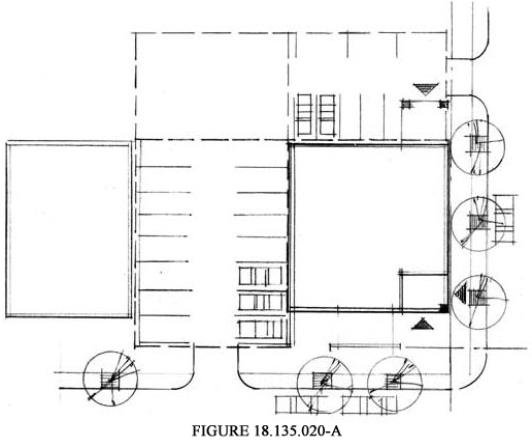
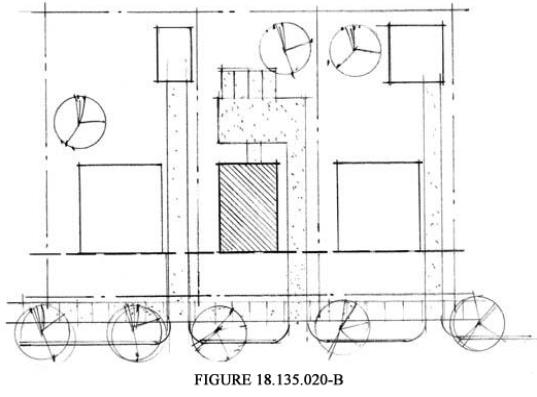
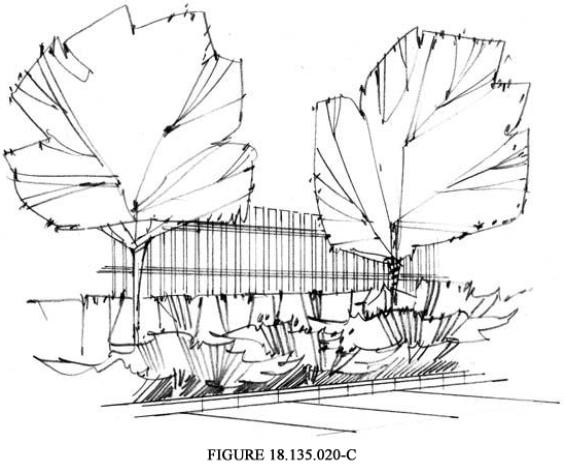
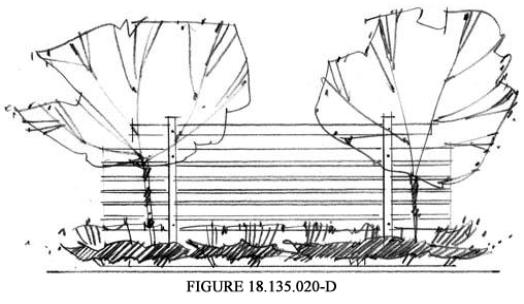
(Ord. 6858 §4, 2013; Ord. 6306 §6, 2004).
18.135.030 Building Design
A. REQUIREMENT: New buildings adjacent to historic structures or to residential neighborhoods, shall appear to have similar scale and design elements as the neighboring buildings.
B. GUIDELINES:
1. Building shapes and forms should have:
a. Modulation of facades into house-size segments.
b. Residential scale building modules similar to adjacent buildings.
c. Similar facade proportions to those on neighboring buildings.
d. Residential scale building components such as porches, decks, and balconies.
e. A roof configuration which reflects traditional residential structures and is pitched such as gable, hip, or shed.
2. Building fenestration and detailing may include some of the following:
a. Smaller window sizes with multi-pane glazing,
b. Overhangs/soffits,
c. Building ornamentation,
d. Dormers, balconies, and
e. Decks, porches, and clearly defined entries facing the street.
3. Building Size, Height and Bulk:
a. Use building stepbacks on upper levels, curved or articulated surfaces, recessed entries, roof lines, pitches and shapes, similar to those in the surrounding area.
b. Buildings should be not taller than two stories if adjacent residential or commercial buildings are two stories or less.
FIGURE 18.135.030
(Ord. 6306 §6, 2004).
18.135.040 Landscape Design
A. REQUIREMENT: Unify, soften and screen commercial or multifamily projects through the use of informal landscaping. (See also Chapter 18.36, Landscaping and Screening.)
B. GUIDELINES:
1. Incorporate unique existing trees into the landscape design.
2. Use a wide variety of plants in informal arrangements.
3. Use layering to promote informality with a variety of plants with differing mature heights.
4. Use plants or trees which have seasonal color.
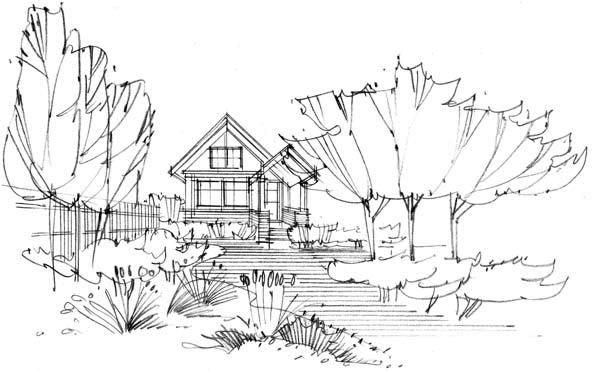
FIGURE 18.135.040
(Ord. 6306 §6, 2004).


